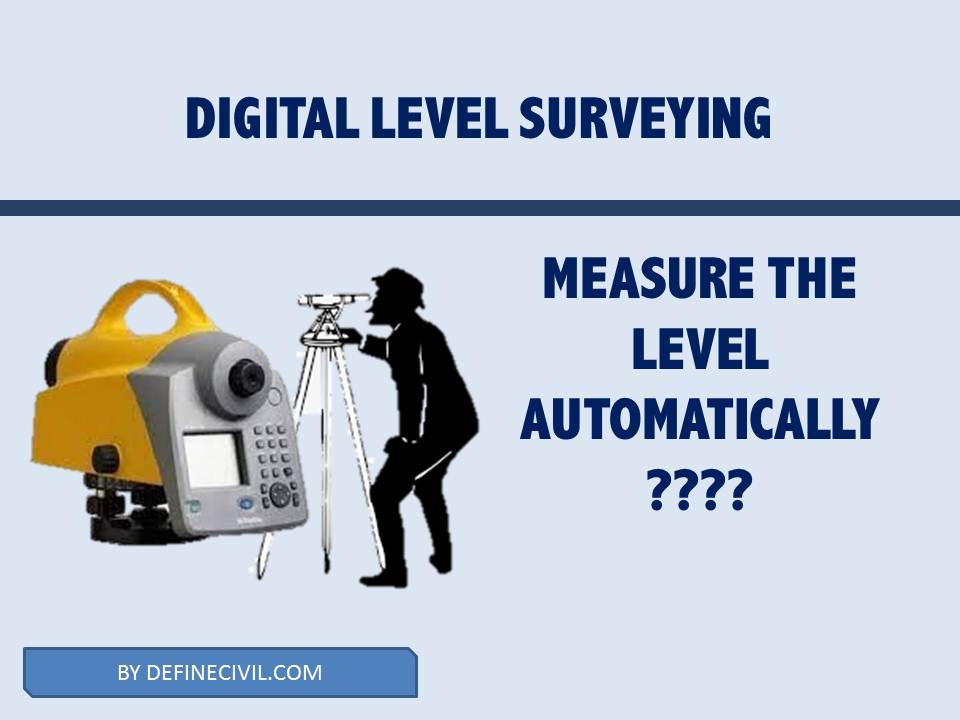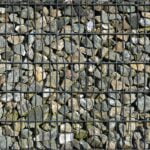In digital level surveying, we uses levels that uses electron beam to analyze a level staff at a distance. You can measure differences in height between two points or determine the height of objects or structures with digital surveying levels.
While interpreting gradation markings on the staff level, these types of digital levels decreases the likelihood of human error. You will get exact measurement on the digital level screen display.

Whey we need a level for construction work?
If you don’t have the concept of the surveyor’s level or don’t know why we actually use level instrument in surveying? Here’s the kicker:
In construction, we need to build components at precise level or height. At site, we have permanent bench marks for which we have the height above sea level accurately known to use. (Mostly surveyors use the GPS system).
Anyhow, we need a device that can help us in measuring the height or level of distant points in relation to the bench mark or base stations. That’s where this leveling instrument comes handy.
We use leveling equipment and digital level surveying for different applications like:
- Determining the exact elevations of floors in a building.
- Developing the proper height of the doors and windows.
- Developing suspended ceilings
- Establishing proper profile for a highway or pavement.
- Determining the proper drainage system.
- Carrying out the structural framework for a building.
Why Digital level Surveying?
Precise digital leveling apparatus is a critical time-saving tool for construction sites that require accurate and quick height measurements.
With traditional survey level equipment, you need to interpret the level readings from the staff gauge with your own eyes. With such, there are more chances of human error and you may not get the precise readings.
In contrast, a digital level does this work for you. With built-in bar code marking scanner, it gives the most accurate readings at job site. Plus you get readings at fast pace that saves times at site.
There are two common types of survey level equipment in use for the field of civil engineering.
- Digital levels
- Auto level
Digital level vs auto level
Well, auto levels make use of conventional graduations of inches or centimetres on the staff level instead of bar code as in digital level.
One benefit of auto level on digital level is that you can quickly setup the instrument at site. It has an in-built swinging prism that allows you to securely place the tripod in less time.
Here’s a book for your as a gift: Download Now
What are the advantages of digital level surveying?
The size of the staff visible in the range of vision is a measure of the length of the staff, which is a key aspect of digital electronic leveling. As a result, the level can calculate the horizontal distance towards the staff instantly. This is useful for;
- Reconciling foresight and back-sights during leveling.
- Calculating other useful distances from staff to the edge.
- From the other end of the bar-coded rod, meter (or feet) graduations are engraved, enabling electronically projected staff measurements to be examined by rotating the staff.
- As a result of the digital scale, the operators can operate more quickly and stress-free.
- The service’s convenience of use, lack of misreading and booking inaccuracies, and instantaneous height computation during measuring and data acquisition are all strengths of digital level surveying.
- As a result, the implementations range from traditional staff readings measurement to line as well as area leveling to computer-assisted online procedures.
Components of Digital Level:
- The main components of the digital level include;
- Telescope eyepiece/ objective.
- Focus encoder.
- Compensator control block.
- Focusing lens.
- Detecting panel.
- Beam splitter.
- Eyepiece for visualization.
- The key features of a digital level include hardware (the digital scale and the leveling rod) and algorithms.
- The mechanical and optical features of a digital level are often the same as those of an automatic level.
- Nevertheless, a beam divider is included for computerized staff reading that sends the bar code picture to a detection diode panel.
- This beam splitter divides the reflecting light mostly from the white portions of the barcode stripes into visible and infrared light factors.
- The light ray reaches the spectator, while the infrared reaches the diode panel.
- The visual of the bar code is translated into a similar video output, which is then contrasted to a visual reference recorded in the device.
Types of Digital Level:
Leveling on construction projects and routine inspection activities are made easier with digital levels. They’re easy to use, quick to gather measurements, and eliminate errors, whereas the organizational skills make leveling work easier. The basic types of digital survey leveling tools features;
- The Leica Sprinter 50, which itself is simple to get around, features computerized height measurement.
- The Sprinter 150 has extra capabilities, and the Sprinter 150M & 250M with storage for rigorous coursework are among the digitized surveying tools that most marketplaces offer and stockpile.
- Companies now have the Leica LS10 and LS15 that are the most accurate measuring instruments on the market.
- The DNA10, as well as DNA03 Leica DNA Automated Meters, are full alternatives for height assessment operations in constructions and topographical surveys, as well as first-order surveillance and balancing.
Key takeaways
Now that you’re fully aware of what surveying levels are and why we prefer digital level surveying, it’s the time to make a call. As you know there are different types of level used in surveying. So, it is best that you first access the type of work upfront, before jumping to conclusion. You have plethora of choices like Dumpy level, Tilting level, automatic level, Crushing’s level or Cooke’s Reversible level. All such level are handy in some specific area of job.
It is best that you consult with a manufacturer or a supplier who’ve got the apt knowledge for the applications of levels. You don’t have to spend a fortune for the digital level surveying. You’ll get these devices at reasonable prices.
If you are master in taking precise and accurate readings, you can prefer to go with an auto level. But if you don’t want an error in readings and don’t have much experience in taking readings, auto level is a preferred option. They not only have a high-tech design but has internal compensator that can correct human error while on the go.



















